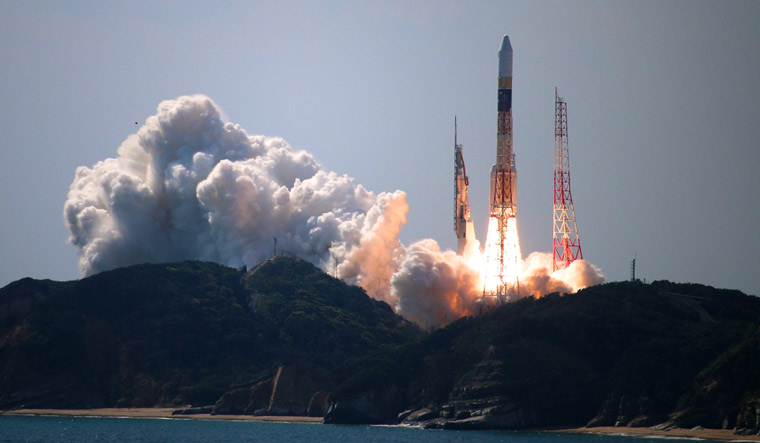Japan's space agency has suspended the launch of an H-2A rocket carrying a lunar probe and an X-ray astronomical satellite set for Monday due to adverse high-altitude winds.
The rocket, operated by Mitsubishi Heavy Industries (MHI) in collaboration with the Japan Aerospace Exploration Agency (JAXA), was scheduled for liftoff from JAXA's Tanegashima Space Center in Kagoshima Prefecture. Despite the H-IIA's impressive 98% success rate, stringent safety constraints led to this eleventh-hour decision, demonstrating Japan's unwavering commitment to safety in space exploration.
Tatsuru Tokunaga, Chief of MHI's launch unit, cited the need to ensure falling debris wouldn't endanger unanticipated areas beyond designated zones as the reason for the launch delay. This meticulous attention to safety highlights Japan's dedication to space exploration endeavours.
While the exact relaunch date remains uncertain, the rescheduled event won't take place before Thursday due to procedural necessities like refuelling. There's even a possibility of a launch window extending as far as September 15.
This mission carries the Smart Lander for Investigating Moon (SLIM) and the X-Ray Imaging and Spectroscopy Mission (XRISM) satellite, signifying significant progress for Japan's space ambitions. SLIM represents Japan's quest for its inaugural lunar landing. The plan involves landing the moon probe in the Mare Nectaris area, marking a pivotal moment in Japanese lunar exploration. XRISM satellite is a collaborative effort between JAXA, NASA, and the European Space Agency.
The H-IIA rocket, developed jointly by JAXA and MHI, has been a stalwart of Japan's space program, boasting 45 successful launches out of 46 attempts since 2001. However, recent setbacks, including the failure of the H3 rocket and an engine explosion during testing, have tested Japan's space ambitions.
With a track record of 45 successful launches as of December 2021, H-IIA (H-2A) has been crucial for deploying satellites and interplanetary spacecraft. The rocket's adaptability is showcased by its ability to incorporate additional boosters to enhance its lifting capacity. The H-IIA's evolution under MHI's private operation has been a significant milestone, affirming its continued success in Japan's space odyssey.


